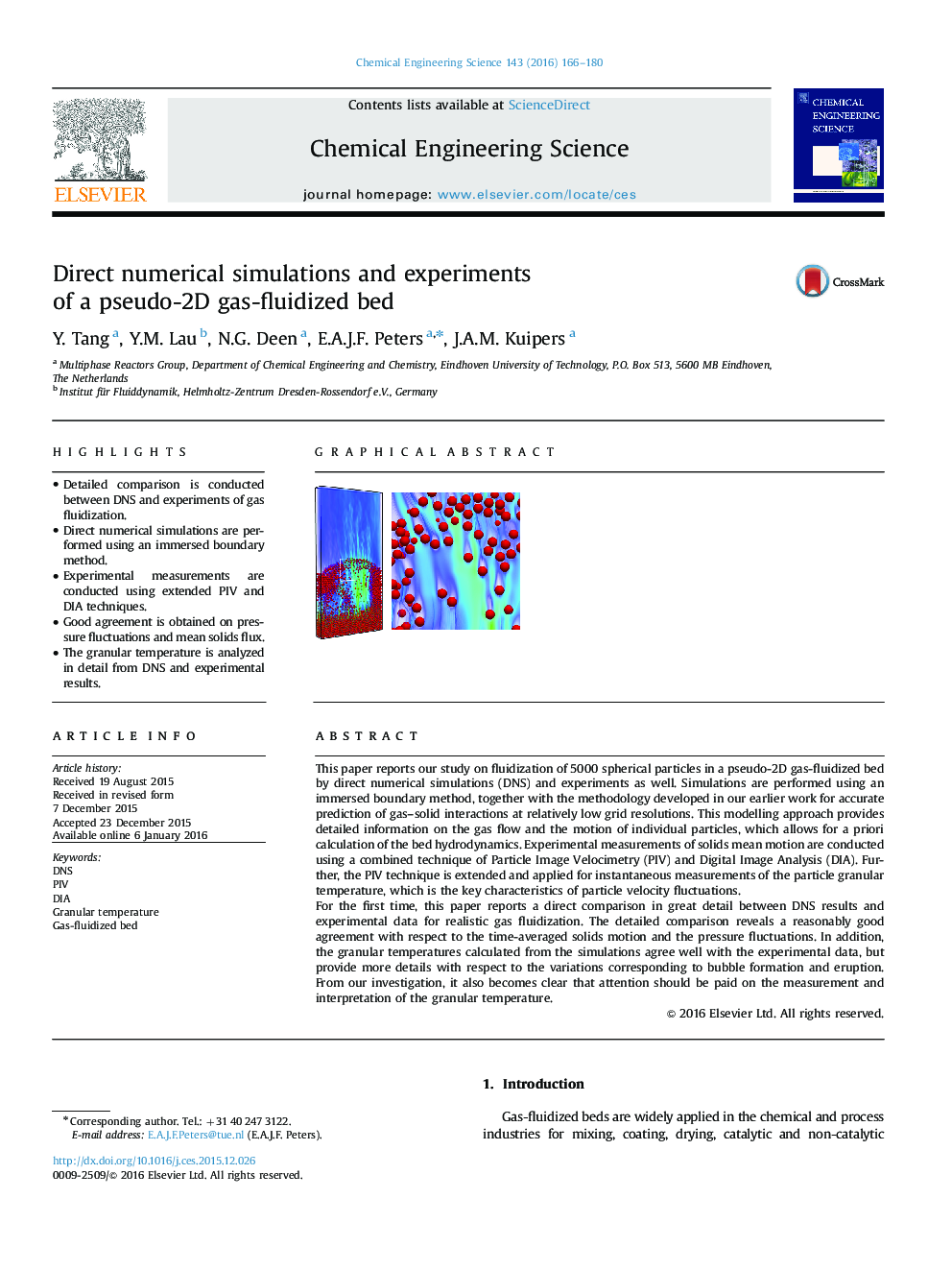| کد مقاله | کد نشریه | سال انتشار | مقاله انگلیسی | نسخه تمام متن |
|---|---|---|---|---|
| 154496 | 456842 | 2016 | 15 صفحه PDF | دانلود رایگان |

• Detailed comparison is conducted between DNS and experiments of gas fluidization.
• Direct numerical simulations are performed using an immersed boundary method.
• Experimental measurements are conducted using extended PIV and DIA techniques.
• Good agreement is obtained on pressure fluctuations and mean solids flux.
• The granular temperature is analyzed in detail from DNS and experimental results.
This paper reports our study on fluidization of 5000 spherical particles in a pseudo-2D gas-fluidized bed by direct numerical simulations (DNS) and experiments as well. Simulations are performed using an immersed boundary method, together with the methodology developed in our earlier work for accurate prediction of gas–solid interactions at relatively low grid resolutions. This modelling approach provides detailed information on the gas flow and the motion of individual particles, which allows for a priori calculation of the bed hydrodynamics. Experimental measurements of solids mean motion are conducted using a combined technique of Particle Image Velocimetry (PIV) and Digital Image Analysis (DIA). Further, the PIV technique is extended and applied for instantaneous measurements of the particle granular temperature, which is the key characteristics of particle velocity fluctuations. For the first time, this paper reports a direct comparison in great detail between DNS results and experimental data for realistic gas fluidization. The detailed comparison reveals a reasonably good agreement with respect to the time-averaged solids motion and the pressure fluctuations. In addition, the granular temperatures calculated from the simulations agree well with the experimental data, but provide more details with respect to the variations corresponding to bubble formation and eruption. From our investigation, it also becomes clear that attention should be paid on the measurement and interpretation of the granular temperature.
Figure optionsDownload high-quality image (400 K)Download as PowerPoint slide
Journal: Chemical Engineering Science - Volume 143, 2 April 2016, Pages 166–180